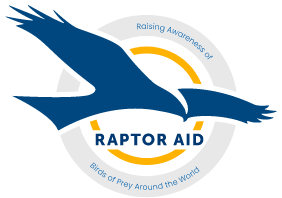Golden Eagle Monitoring 2017 - Part 1
Scotland is an incredible country the landscape and scenery are surely right up there with anywhere else in the world and the wildlife is hard to beat. February sees us start the Golden eagle monitoring as part of the Scottish Raptor Study Groups Highland branches ongoing work. Each year several dedicated volunteers from the various regional groups head out to start monitoring specific species found in their regions. Last year we got involved with monitoring one of the most iconic of all birds of prey the Golden Eagle and so last week saw Jimmi and a friend take to the Highland hills to begin the monitoring of 5 Golden eagle territories for 2017.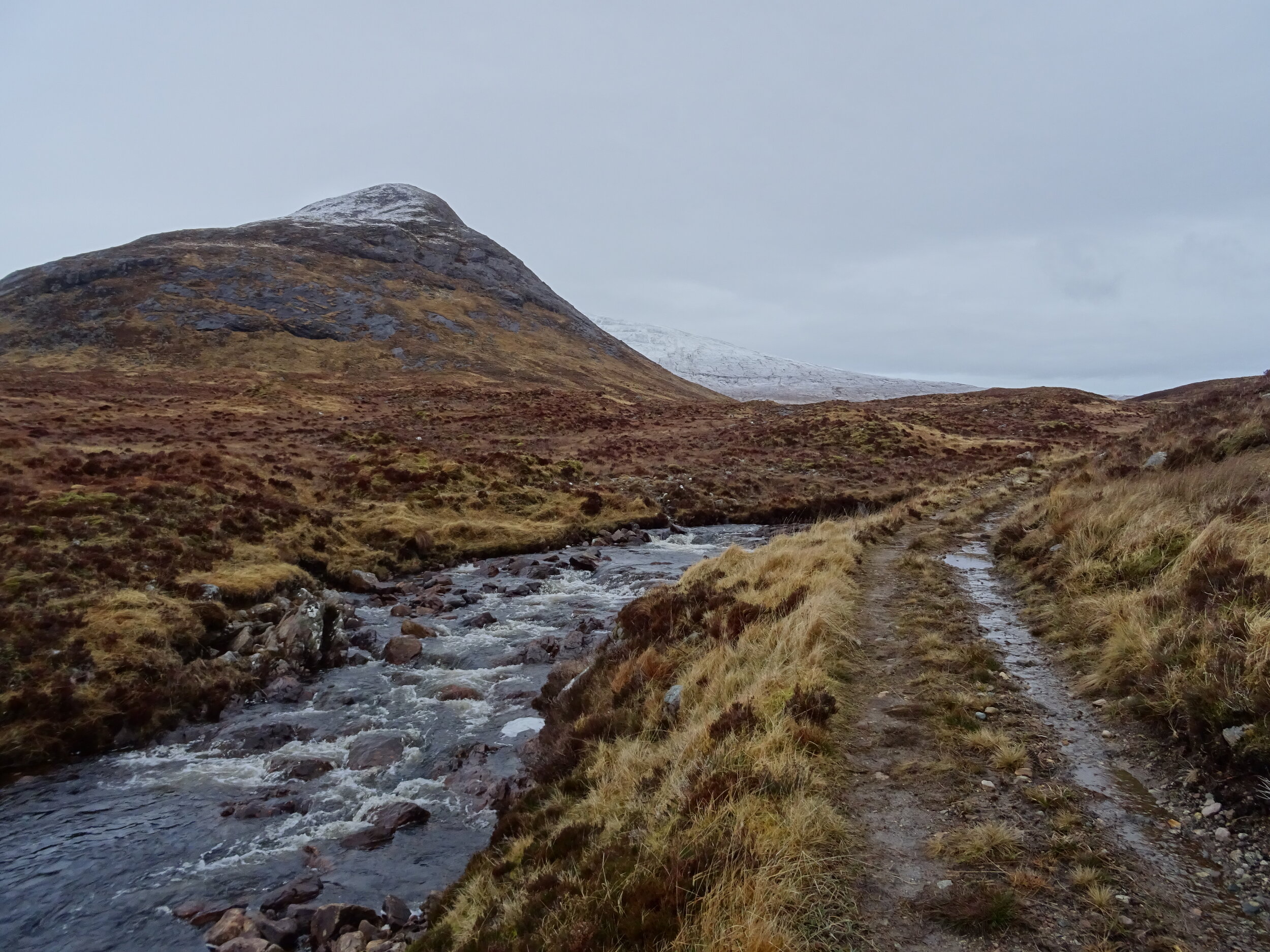 Golden eagles live in some pretty remote places in the UK, no longer found in England they are restricted to Scotland and parts of Ireland. Their numbers have seen a small increase shown by a recent national Golden eagle survey in 2015 but it must be pointed out that the Golden eagle is still under threat from direct persecution as is demonstrated by the Southern Scotland population where only 2-3 pairs are found with the potential for 14-16 pairs. We heard at the Highland Raptor Study Groups meeting on the Monday an update on the plans to relocate eagle chicks from nests in other regions of Scotland to release in the Southern region to help bolster its population, one chick would be taken from a healthy nest of twin chicks with the hope of up to 10 chicks released per year over 5 years. You can find out more here but I'm sure we'll be blogging again on this subject.
Golden eagles live in some pretty remote places in the UK, no longer found in England they are restricted to Scotland and parts of Ireland. Their numbers have seen a small increase shown by a recent national Golden eagle survey in 2015 but it must be pointed out that the Golden eagle is still under threat from direct persecution as is demonstrated by the Southern Scotland population where only 2-3 pairs are found with the potential for 14-16 pairs. We heard at the Highland Raptor Study Groups meeting on the Monday an update on the plans to relocate eagle chicks from nests in other regions of Scotland to release in the Southern region to help bolster its population, one chick would be taken from a healthy nest of twin chicks with the hope of up to 10 chicks released per year over 5 years. You can find out more here but I'm sure we'll be blogging again on this subject.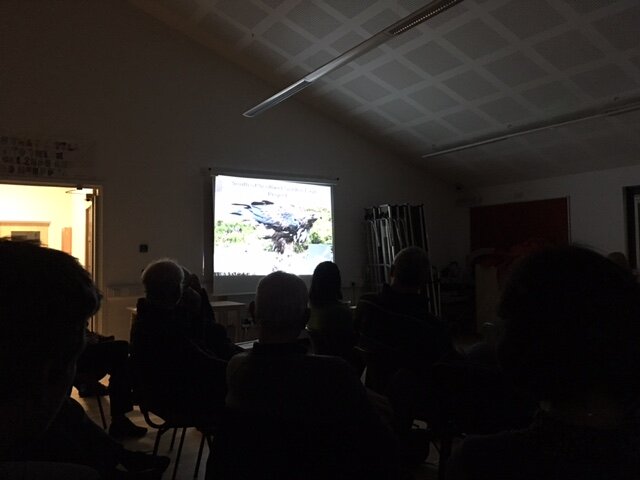 Essentially to try and get the full picture of Golden eagle activity on any given territory whether you have visited it before or not the first visit around February is very important because we are not only looking for birds on territory but whether they are adults, in pairs, display flights, copulating or nest building or just directions of flight. On the Tuesday we headed to a new territory where we had good access which was brilliant as the weather was 'Scottish' so we remained relatively dry in the Landrover - on the drive in towards the end of the track we stumbled upon a pair of eagle perched on a small crag. We back tracked and found a high piece of ground to watch over a larger area of territory and were rewarded with distant views of a pair of eagles moving towards a next door territory on the weeks list. It is worth bearing in mind that most eagle watching is done at long distance to make sure disturbance is kept to a minimum but also to see a larger area of sky, these birds have incredible eyesight but do get used to some activity on the hill with sheep farmers and stalkers going about their business.
Essentially to try and get the full picture of Golden eagle activity on any given territory whether you have visited it before or not the first visit around February is very important because we are not only looking for birds on territory but whether they are adults, in pairs, display flights, copulating or nest building or just directions of flight. On the Tuesday we headed to a new territory where we had good access which was brilliant as the weather was 'Scottish' so we remained relatively dry in the Landrover - on the drive in towards the end of the track we stumbled upon a pair of eagle perched on a small crag. We back tracked and found a high piece of ground to watch over a larger area of territory and were rewarded with distant views of a pair of eagles moving towards a next door territory on the weeks list. It is worth bearing in mind that most eagle watching is done at long distance to make sure disturbance is kept to a minimum but also to see a larger area of sky, these birds have incredible eyesight but do get used to some activity on the hill with sheep farmers and stalkers going about their business. Wednesday saw a trip out alone to a rather wind swept moorland so I was relieved to find shelter next to a small bungalow out of a full wind and the odd hail shower. Watching eagles can be long and fruitless, four hours of watching produced one eagle a long way off rising in the West and cruising across the sky line for 5 minutes before disappearing. A little bit inconclusive but nevertheless it was an eagle in the right area and those brief 5 minutes made the other 235 a little easier. I took a drive further up the glen to find a Peregrine sitting on an old traditional site that hasn't been recorded in use in over 20 years, whilst making a cup of tea the Peregrine took to the air to drive away a Golden eagle, I watched in amazement as two of my childhood dream birds were locked in a mid air dog fight and I even managed to film some of it - incredible views! The eagle dropped away behind a ridge and the Peregrine returned to its watch point on the top of the crag. We will continue to monitor this crag along with the Golden eagles, wouldn't it be fantastic if Peregrines returned after so long, it just goes to show that sometimes you just need a bit of luck and a cup of tea.
Wednesday saw a trip out alone to a rather wind swept moorland so I was relieved to find shelter next to a small bungalow out of a full wind and the odd hail shower. Watching eagles can be long and fruitless, four hours of watching produced one eagle a long way off rising in the West and cruising across the sky line for 5 minutes before disappearing. A little bit inconclusive but nevertheless it was an eagle in the right area and those brief 5 minutes made the other 235 a little easier. I took a drive further up the glen to find a Peregrine sitting on an old traditional site that hasn't been recorded in use in over 20 years, whilst making a cup of tea the Peregrine took to the air to drive away a Golden eagle, I watched in amazement as two of my childhood dream birds were locked in a mid air dog fight and I even managed to film some of it - incredible views! The eagle dropped away behind a ridge and the Peregrine returned to its watch point on the top of the crag. We will continue to monitor this crag along with the Golden eagles, wouldn't it be fantastic if Peregrines returned after so long, it just goes to show that sometimes you just need a bit of luck and a cup of tea.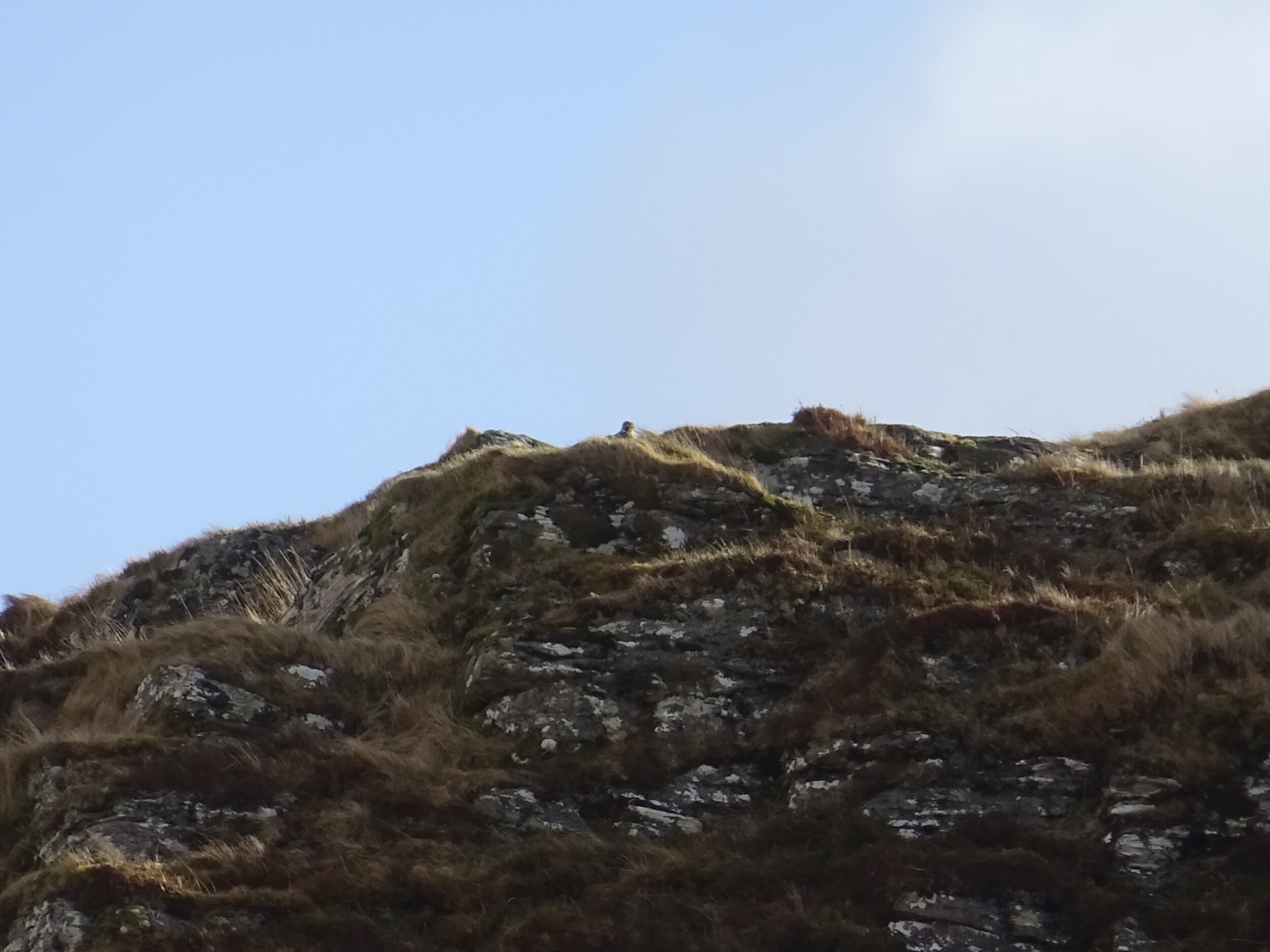 Hold on how can I forget a juvenile White tailed Sea Eagle floated over my head in an almighty hail storm just before I decided to head home! I'm using the weather as an excuse for my rather awful grainy out of focus image. White tails will cover huge distances during the winter months especially juvenile birds in search of food and then territories as they get older. Both species of eagles will rely heavily on carrion and stalkers deer gralloch's over the winter months so it is not unusual to see them in close proximity cruising for a meal.
Hold on how can I forget a juvenile White tailed Sea Eagle floated over my head in an almighty hail storm just before I decided to head home! I'm using the weather as an excuse for my rather awful grainy out of focus image. White tails will cover huge distances during the winter months especially juvenile birds in search of food and then territories as they get older. Both species of eagles will rely heavily on carrion and stalkers deer gralloch's over the winter months so it is not unusual to see them in close proximity cruising for a meal.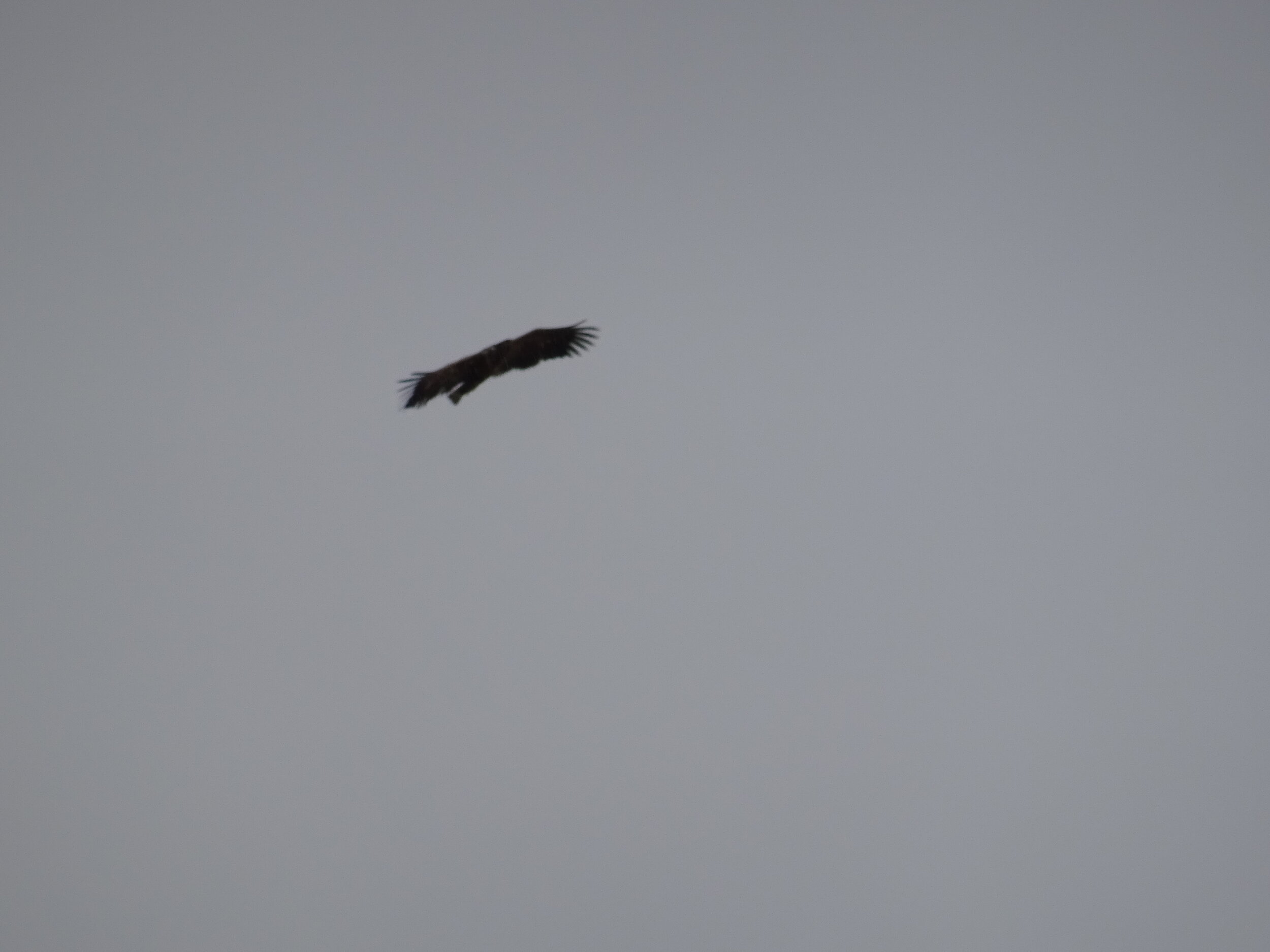 The final couple of days saw us visit two more territories one of which I could never get tired of visiting, it is out of this world beautiful and exactly what you would expect to see as Golden eagle habitat. Open moorland, rushing burns and large snow capped hills with sheer cliff faces just screaming out for eagles, it makes you realise how hardcore these birds really are. We found a nice spot to sit and wait and before too long a pair of Ravens another upland bird moved across the nearest ridge line then disappeared, within 5 minutes they returned but this time on the tail of an adult Golden eagle, the eagle clearly being aggravated took a perch on the smallest crag soon to be joined by a mate. The reason we knew it was a bonded pair was because after a short period of sitting together the birds began a brief moment of copulating (mating) before taking flight and rising off into the clouds and out of sight.
The final couple of days saw us visit two more territories one of which I could never get tired of visiting, it is out of this world beautiful and exactly what you would expect to see as Golden eagle habitat. Open moorland, rushing burns and large snow capped hills with sheer cliff faces just screaming out for eagles, it makes you realise how hardcore these birds really are. We found a nice spot to sit and wait and before too long a pair of Ravens another upland bird moved across the nearest ridge line then disappeared, within 5 minutes they returned but this time on the tail of an adult Golden eagle, the eagle clearly being aggravated took a perch on the smallest crag soon to be joined by a mate. The reason we knew it was a bonded pair was because after a short period of sitting together the birds began a brief moment of copulating (mating) before taking flight and rising off into the clouds and out of sight.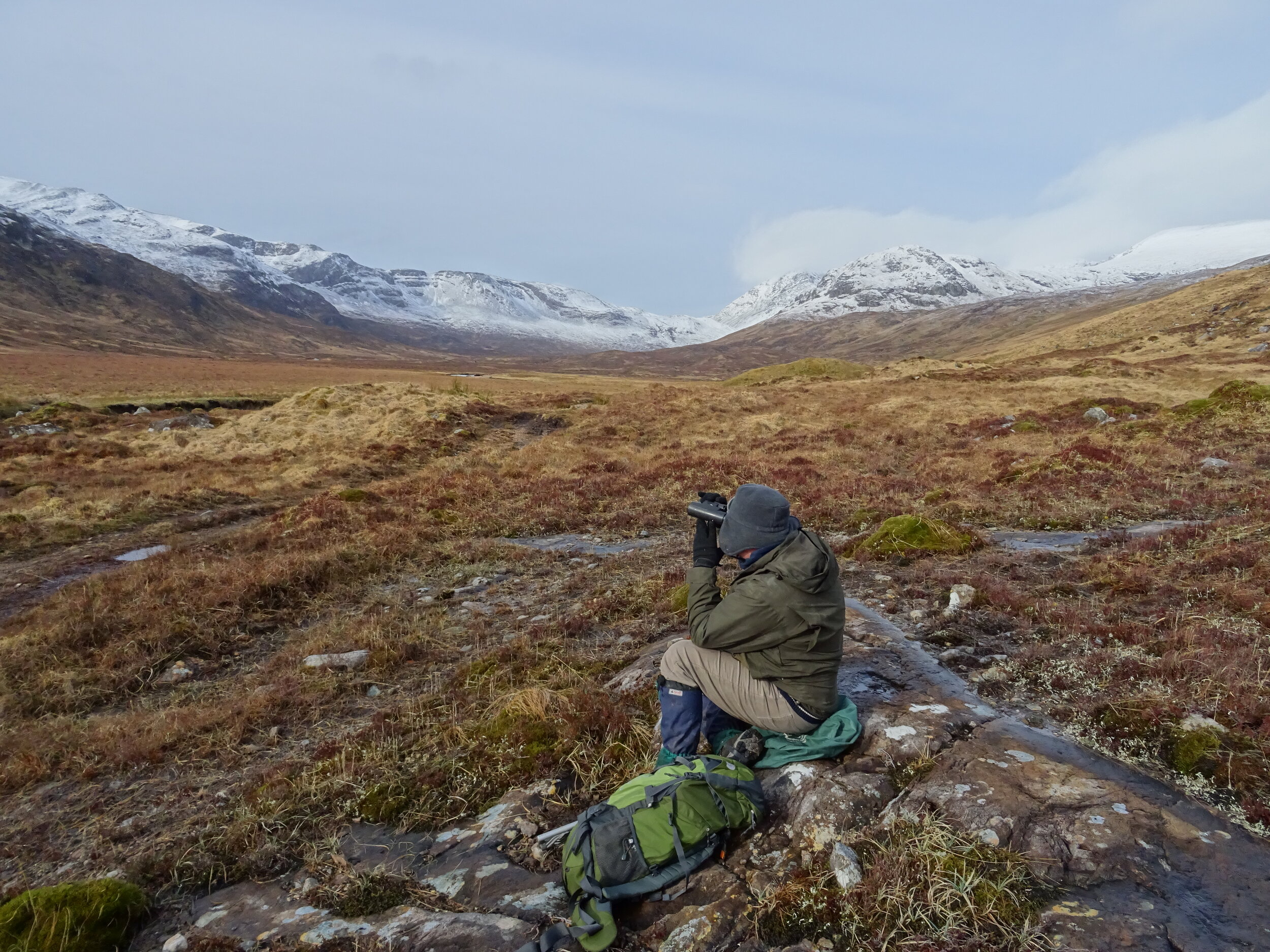 All of this information will be fed into a central database in order to create a larger picture of where Golden eagles are and to create larger population trends along with more unique studies. It must be pointed out that although the raptor study groups do get funding from the Scottish government this is done by volunteers like us who give up time and money to carry out this field work - OK we do love it though! We got to see some of the fantastic work of other members of the Scottish Raptor Study Groups at the annual conference in Perth on the Saturday and it was a brilliant way to cap off a fantastic week of eagle monitoring.
All of this information will be fed into a central database in order to create a larger picture of where Golden eagles are and to create larger population trends along with more unique studies. It must be pointed out that although the raptor study groups do get funding from the Scottish government this is done by volunteers like us who give up time and money to carry out this field work - OK we do love it though! We got to see some of the fantastic work of other members of the Scottish Raptor Study Groups at the annual conference in Perth on the Saturday and it was a brilliant way to cap off a fantastic week of eagle monitoring.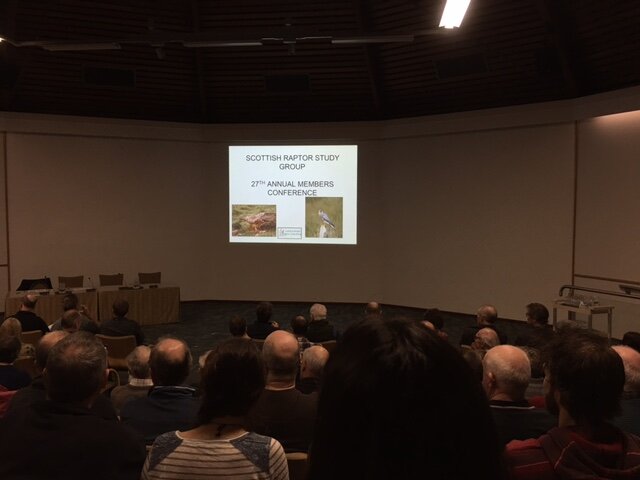 Personally I must thank Ashley and Tracey Smith at Invercassley Cottage B&B for putting me up once again, you won't find better hosts anywhere in the Highlands and they know a thing or two about wildlife! We will be back again in about 6 weeks to check on occupation of nest sites so fingers crossed.Thanks for reading and keep an eye on Facebook for more images and the mid air battle video.Jimmi
Personally I must thank Ashley and Tracey Smith at Invercassley Cottage B&B for putting me up once again, you won't find better hosts anywhere in the Highlands and they know a thing or two about wildlife! We will be back again in about 6 weeks to check on occupation of nest sites so fingers crossed.Thanks for reading and keep an eye on Facebook for more images and the mid air battle video.Jimmi
